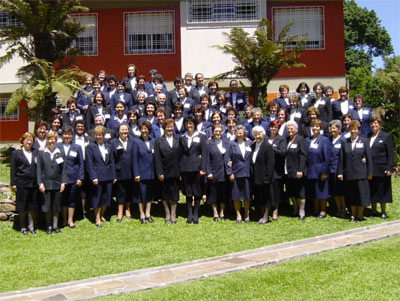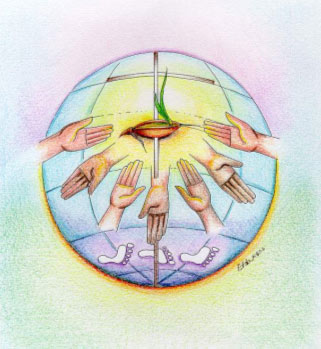|
Action
in the field of health care
Rooted in Jesus Christ, who went around curing the sick, with
a view to the Kingdom, “the Congregation dedicates itself to the pastoral
care of the sick as an important way of carrying out its specific apostolate in
hospitals and homes for the aged, in home service and public health centers, and
in other ways that the health care of the migrants may require” (Constitutions
of the Scalabrinian Missionary Sisters, 120).
In every act of assistance to the sick, using traditional
medical treatment or preventive or alternative medicine, whether in cutting-edge
health structures, institutional health posts, home assistance, animation of the
pastoral care of the sick, public health services or grass-roots clinics run by
the welfare service in migration areas, MSCS Sisters are therefore concerned
with the integrated treatment of the whole person, in order to restore his or
her harmony and inner balance, taste for life, and joy of love and communion.
Blessed Scalabrini said: “Take care of children and the sick: these are the
two ways of winning everything to God” (Scalabrini, Letter to Monsignor P.
Morganti, 1902).

In caring for their neighbor’s health, MSCS Sisters express
the Lord’s merciful love, solidarity and free gift to the neediest migrants,
welcome, openness to dialogue, ecumenical sensitivity and a thorough-going
respect for those who are different, defending those who are most lacking in
protection, announcing the God of life with their witness, and striving to build
up a more humane, solidary and fraternal world.
Scalabrinian
Sisters
–
Missionaries “of Hope” – and Health
Interpretation of the Symbolism

Missionary Sisters “of Hope”, basing themselves on the
strength of the Paschal Mystery – the incarnation, life, passion, death and
resurrection of Jesus Christ – take care of life where it is under threat.
The Cross, symbol of pain. Through pain, Christ
redeemed humankind. MSCS Sisters’ presence in the sphere of health care
relieves pain, imbues hope and helps their brothers and sisters to unite their
suffering to the redemptive plan of the Cross. Moved by compassion, they
come close to them and offer them the care they need.
Colors. The various colors highlight the elements of
the design: the violet stresses pain and redemption; the yellow, the joy of the
resurrection; the blue, the incarnation; the white of the feet, the peace and
universe of the Scalabrinian mission; and the mixture of the hands, the various
ethnic groups.
The seed: the sprouting of the grain of wheat is life
surrounded by attention from its birth, nourished at the source of hope thanks
to the Scalabrinian Missionary Sister’s “charismatic” action.
Seven open hands: in biblical terms, seven is the
symbol of fullness of life and of the special concern that generates life in
abundance; open hands, hands that care for life, some turning toward the source
of hope, and others turning with a gesture of compassion toward themselves,
toward their poor, abandoned and needy migrant brothers and sisters, and toward
mother earth, the source of life.
The feet recall the three pilgrims in Genesis 18 whom
Abraham welcomes with joy, surrounding them with every attention; they evoke the
Trinity, which walks with us and with migrants in the search for a better life.
The world: the space of human mobility, the universe
of Scalabrinian Missionary Sisters, called to ease the pain and suffering of
their migrant brothers and sisters, nourishing in them the hope of life in
fullness, which awaits us after our earthly pilgrimage.
|